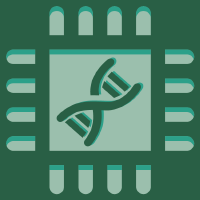Topic Menu
► Topic MenuTopic Editors


Frontiers in Electroanalytical Chemistry in China and Selected Papers from 14thNEAC
Topic Information
Dear colleagues,
Electroanalytical chemistry has entered into the entirely new era due to the utilization of new materials, techniques, and methods. In the last decade, electrochemical measurements are proved to be reliable techniques for quantification in all kinds of matrices with the advantages of fast responses by portable and wearable devices. More recently, techniques and methods in this field are transitioning from requiring large quantities of sample/analyte to studying single molecules, single entities, and very thin electrode/electrolyte interfaces. Currently, researchers are trying to improve the sensitivity, selectivity, reliability, stability, reproducibility, portability, and analysis time of these techniques. Additionally, basic science and application investigations in the biomedical, environmental, industrial, pharmaceutical, and food fields are emerging as a new pole of growth for electroanalytical chemistry.
The 14th National Electroanalytical Chemistry Conference(14thNEAC) (https://www.chemsoc.org.cn/meeting/14thNEAC/) was held in Nanjing, China, 26–29 November 2020. There were more than 1000 attendees from more than 180 universities and institutes attended this conference. Ten keynote speakers summaried the latest research progress of electroanalytical chemistry. 132 young researchers shared their works in the areas of “Electroanalytical Chemistry Fundamentals and Electroanalytical Instruments”, “Bioelectroanalytical Chemistry”, “Nano and Environmental Electroanalytical Chemistry” and “Interface electrochemistry and electroluminescence analysis”. Meanwhile, more than 300 posters contributed to the success of the 14thNEAC.
This Special Issue has been created in collaboration with the 14thNEAC and aims at exhibiting the latest research achievements, findings, and ideas in the areas of “Electroanalytical Chemistry”. 14thNEAC conference participants are cordially invited to contribute a full manuscript to this Special Issue by significantly extending (more than 50%) from their conference papers. They can submit their submissions to one of the three journals Sensors, Chemosensors and Biosensors according to their preferences, and will be offered of Article Processing Charge disocunts of 20%, 50% and 50%, respectively. We also strongly encourage researchers who were unable to participate in the conference to submit articles for this call.
Papers are welcomed on topics that are related to mechanisms within the aspects of Electroanalytical Chemistry, including, but not limited to:
- Fundamental aspects of electroanalytical chemistry and electroanalytical instruments
- Bioelectroanalytical chemistry
- Nano and environmental electroanalytical chemistry
- Interfacial electrochemistry and electroluminescent analysis
Prof. Dr. Ying Wang
Prof. Dr. Yuanjian Zhang
Prof. Dr. Huangxian Ju
Prof. Dr. Jinghong Li
Topic Editors
Participating Journals
| Journal Name | Impact Factor | CiteScore | Launched Year | First Decision (median) | APC |
|---|---|---|---|---|---|

Biosensors
|
5.4 | 4.9 | 2011 | 17.4 Days | CHF 2700 |

Chemosensors
|
4.2 | 3.9 | 2013 | 17.9 Days | CHF 2700 |

Sensors
|
3.9 | 6.8 | 2001 | 17 Days | CHF 2600 |

MDPI Topics is cooperating with Preprints.org and has built a direct connection between MDPI journals and Preprints.org. Authors are encouraged to enjoy the benefits by posting a preprint at Preprints.org prior to publication:
- Immediately share your ideas ahead of publication and establish your research priority;
- Protect your idea from being stolen with this time-stamped preprint article;
- Enhance the exposure and impact of your research;
- Receive feedback from your peers in advance;
- Have it indexed in Web of Science (Preprint Citation Index), Google Scholar, Crossref, SHARE, PrePubMed, Scilit and Europe PMC.



